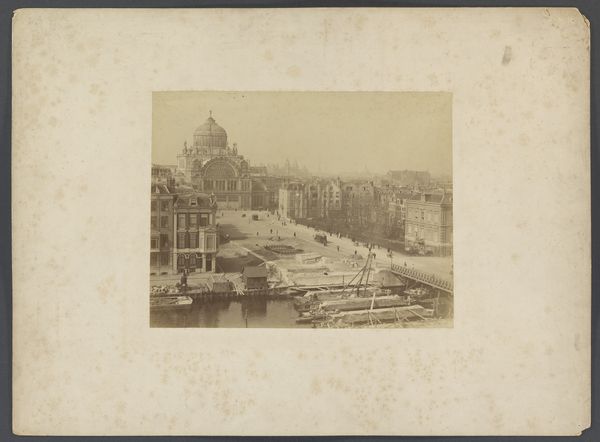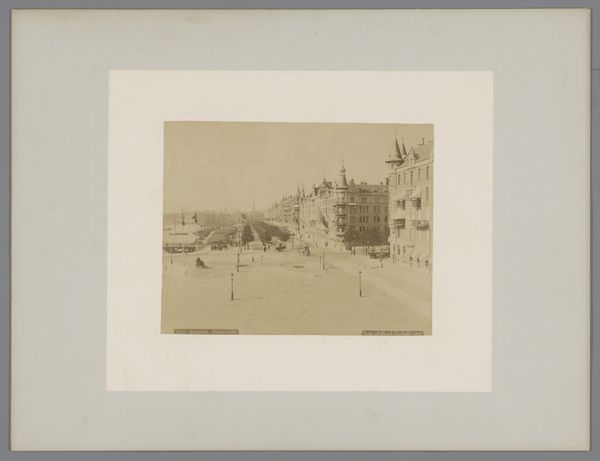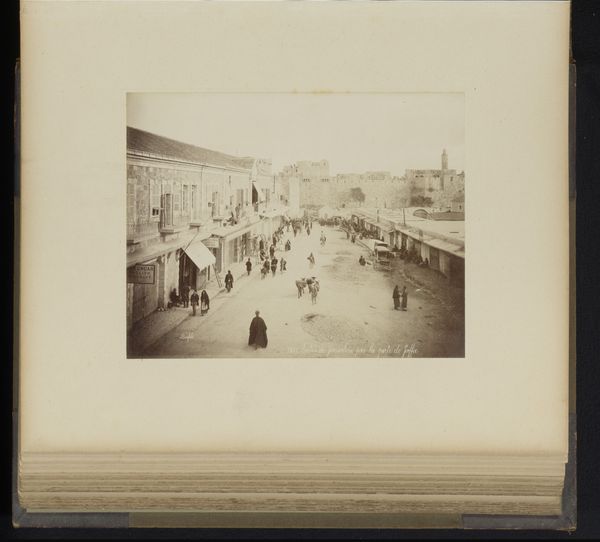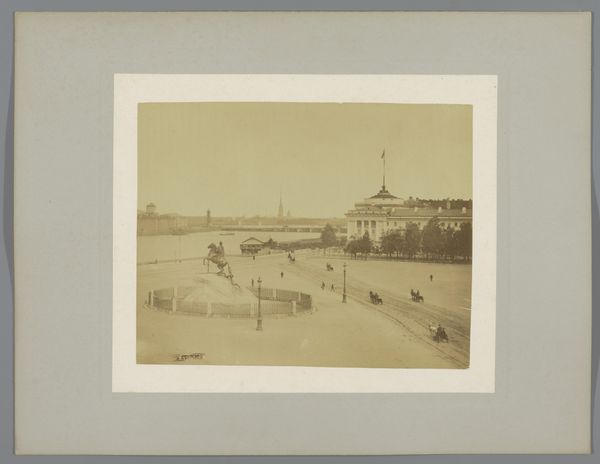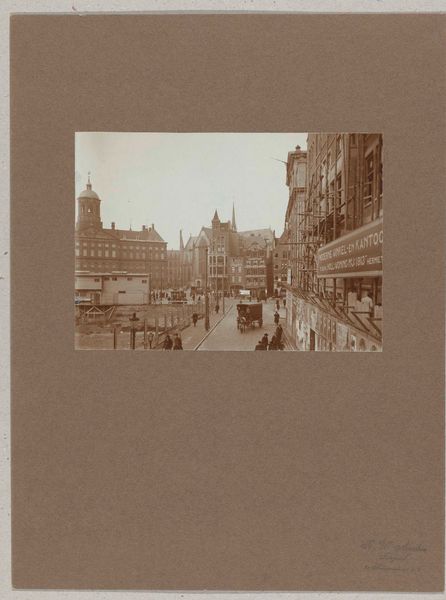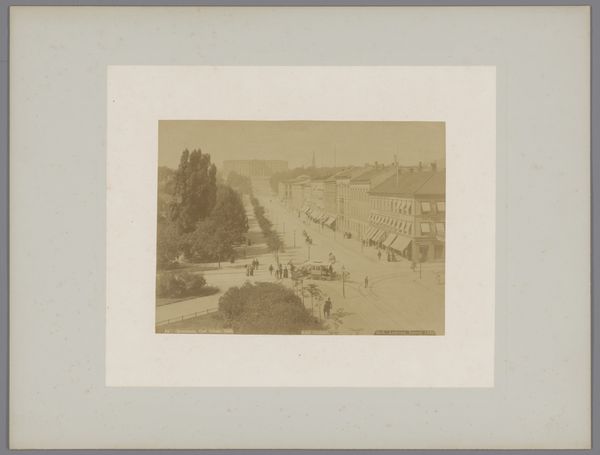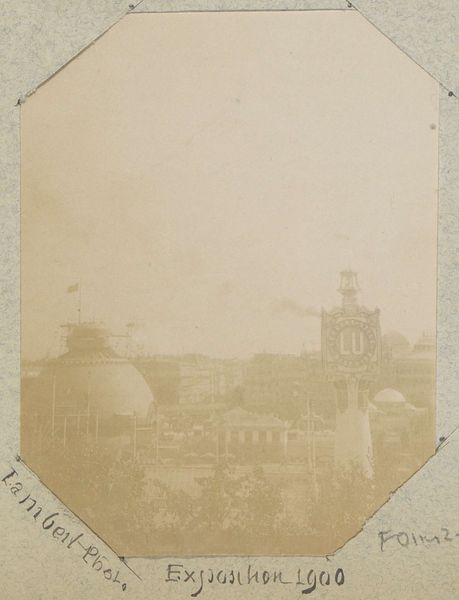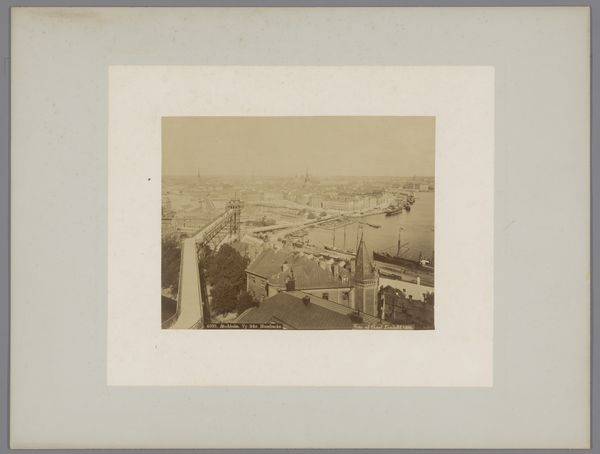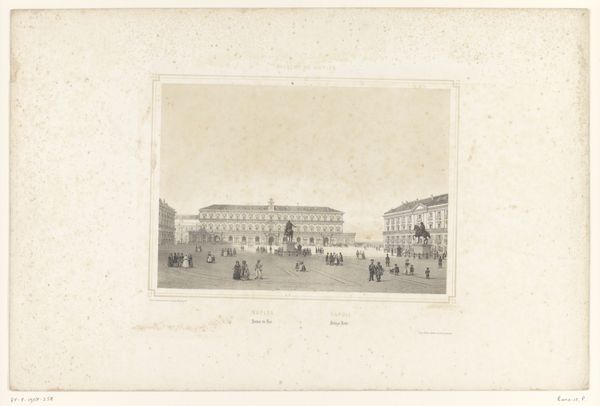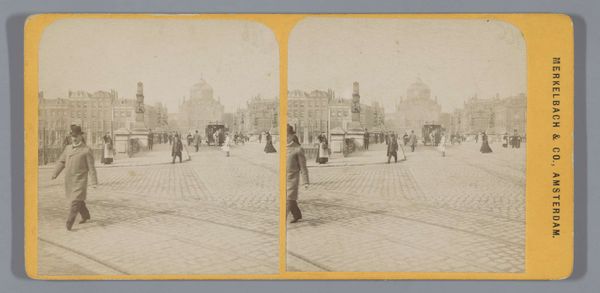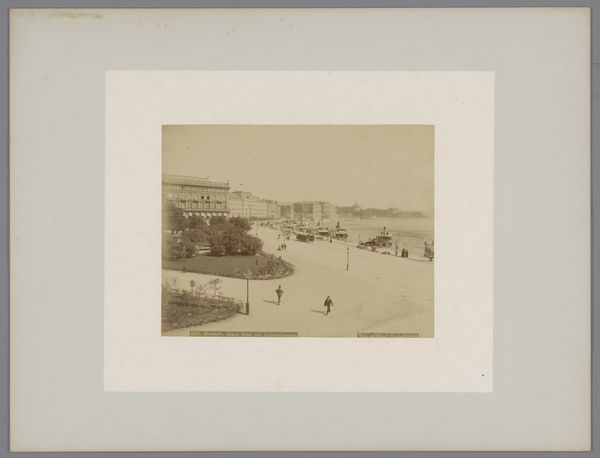
photography, gelatin-silver-print
#
street-photography
#
photography
#
gelatin-silver-print
#
cityscape
#
realism
Dimensions: height 239 mm, width 179 mm, height 405 mm, width 330 mm
Copyright: Rijks Museum: Open Domain
Editor: So, this photograph by Albert Greiner, “Aprilfeesten 1887: de Prins Hendrikkade,” taken in 1887, is a gelatin silver print. It’s interesting to see such an early photograph of a city scene, capturing everyday life, but it makes me wonder what Greiner wanted to capture and communicate in doing so. What do you see in this image? Curator: This photograph provides a fascinating glimpse into the socio-political atmosphere of late 19th-century Amsterdam. Think about it: photography itself was still relatively new, and its use to document a public event like the Aprilfeesten speaks volumes. Editor: What exactly were the Aprilfeesten? Curator: The Aprilfeesten, or April Celebrations, would have been a significant moment of collective identity and national pride, potentially connected to royal events, with the Dutch flag quite visible in the photograph. Capturing it indicates the photographer’s understanding of photography’s capacity to participate in shaping collective memory and the politics of display. Notice how the perspective emphasizes the crowd; how does that contribute to its function as a socio-political document? Editor: I see what you mean; it's not just a pretty picture. It becomes evidence, almost, of a certain type of gathering, maybe even of social unity. But couldn't someone argue it's just documentation? Curator: Documentation always carries a perspective. This image, displayed in the Rijksmuseum today, enters into a contemporary dialogue. What does it mean for a historical institution to preserve and exhibit this particular view of public celebration from over a century ago? How does that shape our understanding of Dutch identity and the public role of art? Editor: That makes me rethink photography from this time. It's not a neutral record; it's participating in a conversation about the city and its people. Thanks for pointing out the institutional element. Curator: Exactly. Considering the social and political context opens up exciting layers of interpretation. It also reveals the way we read those images.
Comments
No comments
Be the first to comment and join the conversation on the ultimate creative platform.

